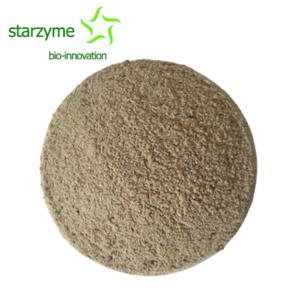Enzyme manufacturers talk about the role of several commonly used enzyme preparations

Phytase can improve the exercise rate of phytate phosphorus in plant-based feeds, and also improve the exercise efficiency of trace elements such as zinc, iron, and copper from plant-derived sources. Adding phytase to duck feeds can significantly save inorganic phosphorus, Reducing the pollution of phosphorus on the environment and improving the production performance of ducks have good economic and social benefits. At present, phytase in many countries is produced by using aspergillus enzyme, which is called 3-phytase. Because it is produced with natural microorganisms, the output is low and the cost is high. The way out in the future is to use genetic recombination technology to improve the amount of enzyme produced by microorganisms and reduce the cost. In addition, a few natural plant-based feeds contain phytase to varying degrees. Wheat, especially its by-product wheat bran, contains very high levels of phytase, so the exercise rate of phytate phosphorus is high.
Compound cellulase can improve the efficiency of animals to use non-nutritive carbohydrates. It is a kind of enzyme preparation with a very high development cost and a promising future. Currently, the development and exercise of cellulase is still in its infancy. The cellulase used in the feed industry is mainly produced by fermentation of a little koji enzymes, often complex enzymes, which are inevitable digestion of cellulose, hemicellulose, pectin, starch, etc. Because the quality of these enzymes is related to their production process, duck producers should pay attention to their character when choosing such enzyme preparations. For dosage, please refer to the product introduction.
Glucanase is a kind of enzyme that has been researched and developed in the world. The content of non-starch polysaccharides (NSP) such as β-glucan is high in barley and wheat seeds and soybean meal. In the duck compound feed, if the amount of such feed is excessive, the non-starch polysaccharides contained in the intestine easily form sticky chyme, which affects the digestion of nutrients. Adding glycanase to the diet can degrade the non-starch polysaccharides It produces small, functional glycans, eliminates its ability to form viscous chyme, and significantly improves the digestion rate of nutrients, reduces the excretion of organic matter in feces, and reduces environmental pollution. For the increase, refer to the product introduction.
Protein digestion tools are the protein and starch in the feed, which can improve the digestive exercise rate of animals. In production, these enzymes are important for young animals with poor penetration. The feed for ducklings can be increased, the dosage is generally 0.1%.
Enzyme preparation manufacturers remind you that among the above enzyme preparations, phytase and glycanase as well as the multi-enzyme complexes of the above enzymes are mostly used in duck feed. In production, the application of enzyme preparations should be combined with animal physiological characteristics and feed characteristics, and reasonable enzyme preparations should be selected, otherwise it is very likely that the expected results will not be achieved.





